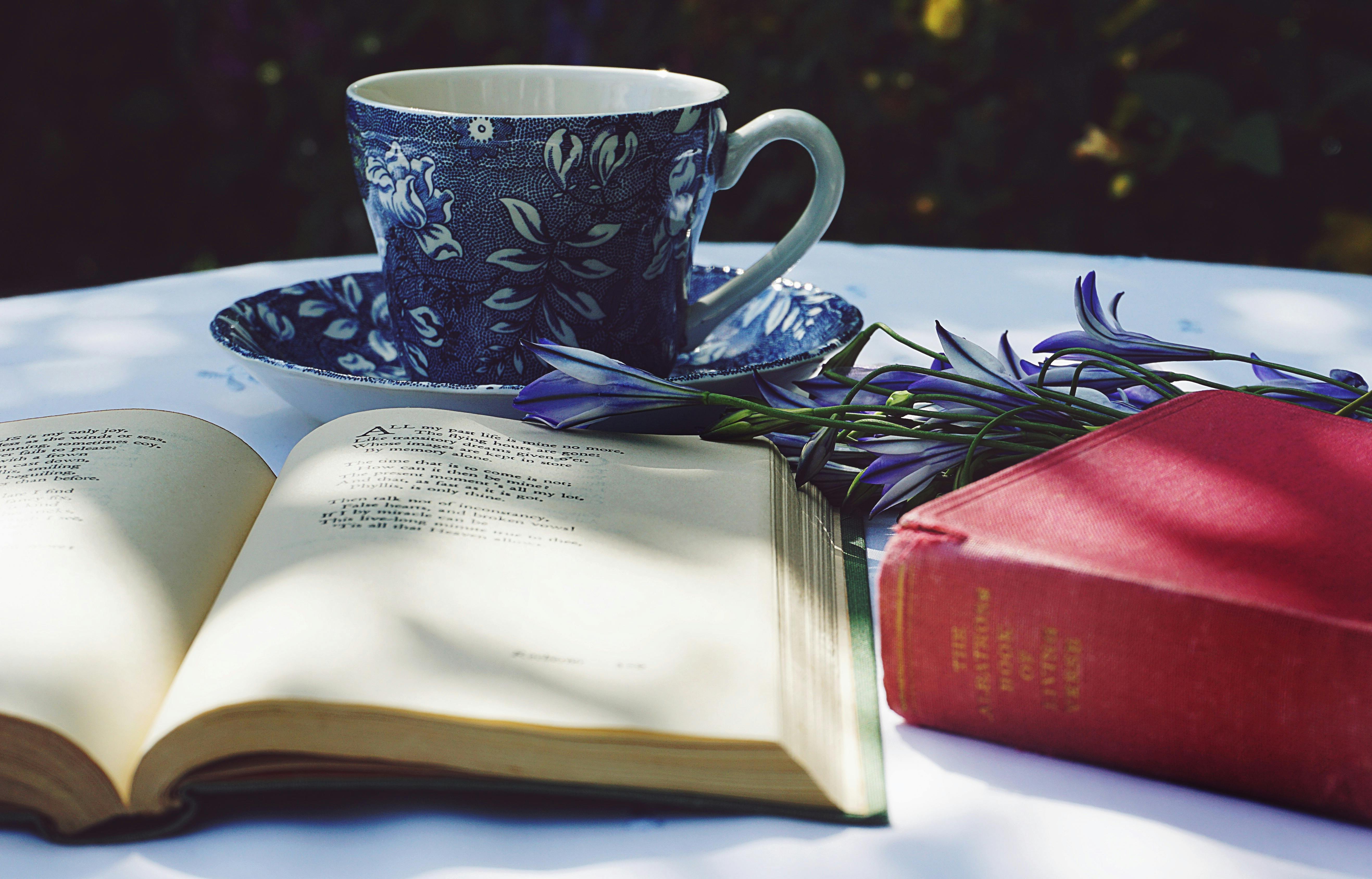Hot tea is a popular beverage that is enjoyed around the world. But what exactly is it made up of? Is hot tea a homogeneous mixture? In this article, we will explore the answer to this question, taking a look at what makes up hot tea and whether it can be classified as a homogeneous mixture.Hot tea is a type of beverage that is made by steeping tea leaves or a tea bag in hot water. It is usually served with milk and sugar and can be consumed hot or cold.
Is Hot Tea a Mixture?
Yes, hot tea is a mixture. A mixture is a combination of two or more substances that are not chemically combined. In this case, hot tea is typically made up of hot water and tea leaves, although it can also be made with other ingredients such as herbs, spices, or sweeteners. The ingredients are mixed together but they don’t form a chemical bond when combined in this way. This makes hot tea a mixture rather than a compound.
Since hot tea is a mixture, the components of the beverage can be separated easily by physical means such as filtration or distillation. This is in contrast to compounds which require chemical processes to separate them into their individual elements. For example, if you were to heat sugar and water together you would form a compound called sucrose whereas if you mix tea leaves and hot water together you would form a mixture of the two substances that could be separated by filtration or other physical processes.
History
Hot tea has been consumed for centuries and is one of the oldest beverages in the world. The exact origin of hot tea is unclear, but it is believed to have originated in China during the Shang dynasty (1766 BC–1046 BC). It then spread to other parts of Asia, Europe, and Africa. Today, it is enjoyed in many countries around the world and has become a popular beverage for many people.
Preparation
Hot tea is typically prepared by steeping tea leaves or a tea bag in hot water for several minutes. The amount of time the tea leaves are steeped depends on the type of tea being brewed and its desired strength. Many people add milk or sugar to their hot tea to enhance the flavor. In some cultures, spices such as cinnamon or ginger are added to give it a unique flavor.
Health Benefits
Hot tea contains antioxidants which may help protect against cell damage and reduce inflammation. It may also help lower blood pressure and cholesterol levels, boost immunity, and improve digestion. Additionally, drinking hot tea may help reduce stress levels and promote relaxation due to its calming effect.
Types
There are many different types of hot teas available on the market today including green, black, oolong, white, pu-erh, herbal/tisane/fruit teas, rooibos/redbush teas, and more. Each type has its own unique flavor profile and health benefits so it’s important to find one that suits your tastes and needs best.
Characteristics
The characteristics of hot tea depend on the type being brewed but generally they have a light aroma with subtle flavors that can range from sweet to earthy or floral depending on the variety. Additionally, hot teas can be enjoyed both cold or hot depending on preference and season.
Definition of Homogeneous Mixture
A homogeneous mixture is a mixture that has the same uniform composition and properties throughout. It is made up of two or more components that are distributed evenly in a single phase. Examples of homogeneous mixtures include solutions, alloys, and colloids.
In a solution, the particles of the solute are dissolved in the solvent, and both substances form one phase. This means that the solution has the same physical properties throughout, such as density and viscosity. Alloys are also homogeneous mixtures in which two or more metals are combined to form a single solid material with uniform composition and properties. Colloids are a type of homogeneous mixture made up of tiny particles suspended in a liquid or gas medium.
The particles in a homogeneous mixture are small enough to be uniformly distributed throughout the mixture, but large enough to be visible under magnification. The components of a homogeneous mixture do not separate out over time due to their uniform distribution throughout the mixture. However, it is possible for some components to react with each other or with other substances in the mixture, causing changes in its composition over time.
Types of Homogeneous Mixtures
A homogeneous mixture is composed of only one phase and one composition throughout. These mixtures are also referred to as solutions. The components in a homogeneous mixture can be physically separated using distillation or other techniques. Common examples of homogeneous mixtures include salt water, sugar water, and air. There are three main types of homogeneous mixtures: solutions, colloids, and suspensions.
A solution is a type of homogeneous mixture that consists of two or more substances evenly distributed throughout the solution. Common examples include saltwater, sugar water, and alcohol in water. Solutions are composed of a solute (the substance being dissolved) and a solvent (the substance doing the dissolving). When the solute is dissolved in the solvent, it forms a solution with uniform properties throughout.
Colloids are another type of homogeneous mixture in which tiny particles are suspended throughout the mixture. These particles cannot be seen by the naked eye and do not settle out over time like suspensions do. Examples of colloids include fog, milk, whipped cream, shaving cream, gelatin desserts, aerosols, and smoke.
Suspensions are homogeneous mixtures that consist of large particles suspended throughout the mixture. These particles can be seen by the naked eye and will eventually settle out over time if left undisturbed. Examples of suspensions include mud or silt-laden water, sand-filled water, and paint mixed with a solvent such as linseed oil or turpentine.

Hot Tea is a Homogeneous Mixture
Hot tea is a homogeneous mixture, meaning that it consists of components that are mixed together and distributed evenly throughout the mixture. The components of hot tea include water, tea leaves, and other flavorings such as sugar or spices. All of these components are combined and blended together so that they are distributed evenly throughout the hot tea. This means that no matter where you take a sip of hot tea from, it will taste the same.
The components in hot tea can also be broken down further into their individual molecules. These molecules are incredibly small and have been thoroughly mixed together so that they cannot be seen with the naked eye. This makes hot tea an example of a true homogeneous mixture as all of its components have been completely blended together to form one uniform substance.
Overall, hot tea is an example of a homogeneous mixture due to its even distribution of components and its molecular composition. This means that if you pour two cups of hot tea from the same pot, both cups will consist of the same ingredients in the same amounts, giving both cups an identical taste.
Components of Hot Tea
Hot tea is one of the most popular beverages around the world. It is a complex beverage made of multiple components. The primary ingredients in hot tea are water and tea leaves. Other essential components include sugar, milk, and flavorings such as honey, spices, and herbs.
Water is an integral part of brewing tea. The quality of the water can greatly affect the overall taste of the tea. Hard water can make tea taste bitter while soft water creates a more mellow flavor. The ideal water temperature for brewing tea is between 80-90°C (176-194°F).
Tea leaves are the main component necessary for making hot tea. Different types of teas come from various types of leaves and each has its own unique flavor profile and health benefits. Green teas come from unoxidized leaves, while black teas are made from fully oxidized leaves. Herbal tisanes are brewed with herbs rather than actual tea leaves.
Sugar adds sweetness to hot tea and helps to balance out any bitterness from the tea leaves or water quality. Honey is another popular sweetener used in hot teas that can add unique flavors depending on what type is used in the brewing process.
Milk can be added to hot teas to create a creamy texture and mellow out any bitter flavors from the tea leaves or hard water. Non-dairy alternatives such as almond milk or oat milk can also be used in place of dairy milk if desired.
Lastly, flavoring agents such as spices and herbs can be added to hot teas to create unique flavor profiles such as chai or masala chai teas. Popular herbs include ginger, cardamom, cloves, cinnamon, star anise, nutmeg, peppermint, lemongrass, hibiscus flowers, rose petals, lavender buds and more.
All these components combine together to create a delicious cup of hot tea that is enjoyed around the world!
Health Benefits of Hot Tea
Hot tea is a popular drink consumed around the world. It has many health benefits due to its antioxidant properties. Studies have shown that hot tea can help protect against cancer, reduce inflammation, and improve heart health. Additionally, hot tea has been found to be beneficial for digestive health and can even help with weight loss. The antioxidants in hot tea may also help to boost the immune system and protect against harmful bacteria and viruses.
Types of Hot Tea
There are many different types of hot tea available today. Commonly consumed types of hot tea include green tea, black tea, oolong tea, white tea, rooibos tea, and herbal teas like chamomile or peppermint. Each type of hot tea has its own unique flavor profile and offers different health benefits.
Preparation of Hot Tea
Hot tea can be prepared in several ways depending on the type of tea being used. Generally speaking, all types require boiling water to be poured over the leaves or bag in a pot or cup. For loose-leaf teas, a strainer can be used to strain out the leaves after steeping for 3-5 minutes. Herbal teas often require longer steeping times (up to 10 minutes) in order to extract the full flavor and health benefits from the herbs.
Flavor Properties of Hot Tea
The flavor profile of any given type of hot tea depends on several factors including the origin and quality of the leaves or herbs as well as how long it is steeped for. Green teas tend to have a light yet refreshing flavor whereas black teas have a bolder taste with more tannins present. Oolong teas tend to have a floral aroma while white teas are sweet and mellow with subtle notes of honey or apricot. Herbal teas can range from mild and fruity (elderflower) to spicy (ginger) or even bitter (dandelion).

Conclusion
In conclusion, hot tea is a homogeneous mixture. It is composed of water, tea leaves and other additives that are mixed together in a uniform composition. This means that when you take a sip of hot tea, you are getting the same proportion of ingredients each time. The particles of the ingredients are too small to be seen with the naked eye, so the liquid appears uniform and consistent throughout.
Hot tea also has many health benefits due to its various ingredients. It can help to reduce inflammation, improve cognitive function and even reduce stress. Hot tea is a great beverage for any occasion and is an easy way to get some extra nutrition into your day.
